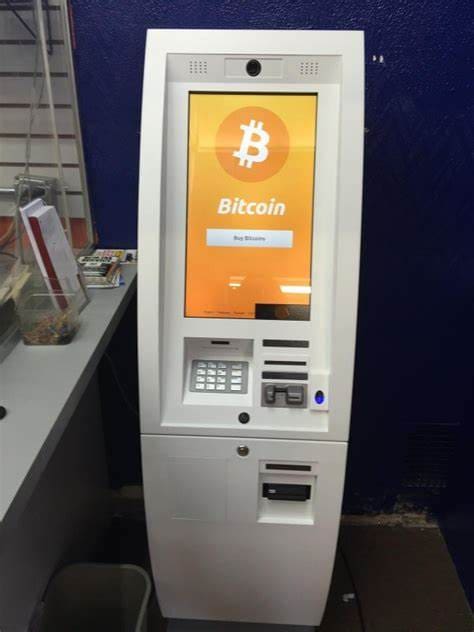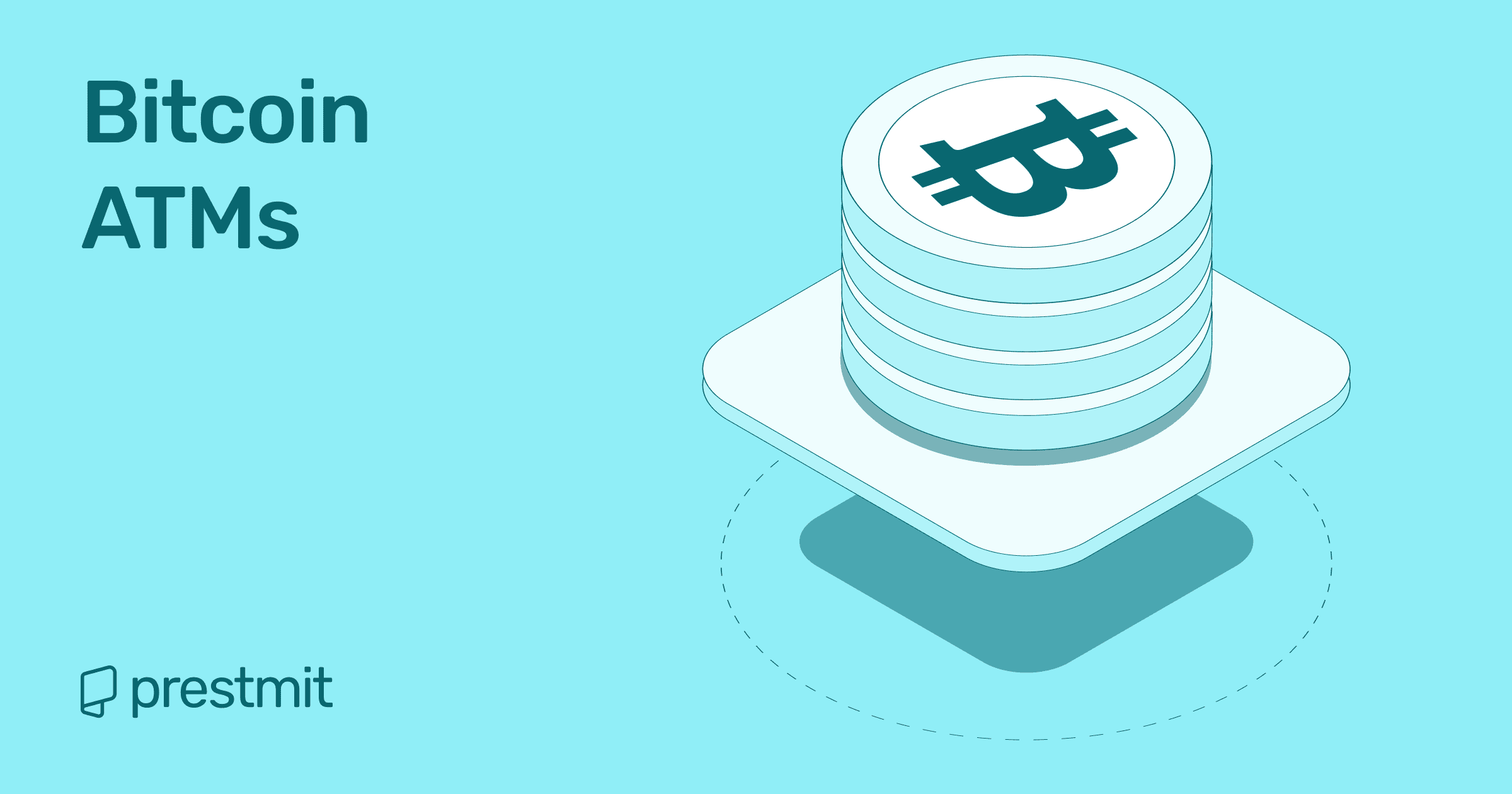Table of Contents
The world of cryptocurrency has transformed the way we think about money, payments, and financial freedom. While most people are used to buying Bitcoin through crypto exchanges, Bitcoin ATMs is another innovative method that has emerged in recent years.
These machines bring digital currency into the physical world, bridging the gap between traditional finance and blockchain technology. But what exactly are Bitcoin ATMs, and how do they work? Let’s explore this exciting piece of crypto infrastructure in detail.
What Are Bitcoin ATMs?

Bitcoin ATMs, often abbreviated as BTMs, are physical standalone machines that allow you to buy and sometimes sell Bitcoin and other popular cryptocurrencies like Ethereum, Litecoin, and stablecoins using cash or debit/credit cards.
Unlike traditional bank ATMs, which connect to your bank account, Bitcoin ATMs connect directly to the cryptocurrency network, allowing you to buy or sell crypto in person rather than only through digital trading platforms.
Most Bitcoin ATMs operate in two main modes:
- One-way (Buy-Only) Bitcoin ATMs: These Bitcoin ATMs allow you to purchase cryptocurrency. All you need to do is insert your cash or swipe your debit card, enter your wallet address or scan a QR code, and the cryptocurrency is sent directly to your crypto wallet.
- Two-way (Buy and Sell) Bitcoin ATMs: These Bitcoin ATMs allow you to buy and sell cryptocurrencies. If you want to sell crypto, you would have to send the crypto to the Bitcoin ATM’s wallet address, after which the machine dispenses cash to you.
Bitcoin ATMs are designed to make cryptocurrency more accessible, especially for people who may not feel comfortable using online exchanges, and are often located in convenience stores, shopping malls, airports, and other public spaces.
How Does a Bitcoin ATM Work?
Bitcoin ATMs work by connecting directly to cryptocurrency networks rather than traditional bank accounts. When you interact with a Bitcoin ATM, it communicates with the blockchain to process transactions in real time.
When you want to buy crypto, the machine converts your cash or card payment you provide into cryptocurrency at the current market rate and transfers it to your wallet.
On the other hand, if you want to sell crypto, the Bitcoin ATM receives the crypto from your crypto wallet and dispenses the equivalent value in cash.
Most Bitcoin ATMs are connected to a back-end exchange or liquidity provider, which ensures that the machine can offer accurate pricing and has enough cash and crypto available for both buying and selling.
The machines also integrate identity verification systems to comply with local regulations, such as Know Your Customer (KYC) and Anti-Money Laundering (AML) rules.
Technically, a Bitcoin ATM is a combination of hardware, software, and secure network connections. The hardware includes cash acceptors, card readers, QR code scanners, and sometimes printers for receipts.
The software handles the user interface, transaction processing, communication with exchanges, and compliance checks while transactions are recorded on the blockchain, which guarantees transparency and security.
What Are the Benefits of Bitcoin ATMs?
1. Convenience
One of the biggest advantages of Bitcoin ATMs is their convenience. They allow you to buy and sometimes sell cryptocurrencies quickly, often within just a few minutes.
Many machines are strategically located in easily accessible spots like shopping malls, convenience stores, and airports, so you don’t have to go out of your way to make a crypto transaction.
2. In-Person Transactions
If you aren’t comfortable with using online exchanges for your crypto transactions, Bitcoin ATMs are a solid alternative as they allow you to physically interact with cryptocurrencies.
You can complete transactions without navigating complex online platforms, which is especially helpful for beginners. The tangible aspect of using a machine can make the process feel more familiar and trustworthy, giving you a sense of security.
3. Immediate Access
Unlike traditional online exchanges that may require account creation, bank transfers, or multiple verification steps, Bitcoin ATMs often allow for instant access to cryptocurrency.
Once the transaction is processed, the crypto is sent directly to your wallet, making it possible to buy or sell on the spot. This instant transaction is useful if you want to take advantage of price changes or need fast access to digital assets.
4. Supports Multiple Cryptocurrencies
While Bitcoin is the most common cryptocurrency available at Bitcoin ATMs, many machines also support Ethereum, Litecoin, and some stablecoins. This flexibility lets you diversify your crypto holdings without needing multiple online accounts or exchanges.
5. Privacy (Within Limits)
Some Bitcoin ATMs allow small transactions without extensive identification, giving you a degree of privacy and discretion. However, you may be asked to go through verification for larger transactions due to regulatory compliance.
Nonetheless, if you value confidentiality, this should be your best option knowing fully well that you can make minor purchases without having to submit too much personal information.
What Are the Risks of Bitcoin ATMs?
1. High Transaction Fees
Bitcoin ATMs are convenient, but that convenience comes at a cost. They often charge higher transaction fees than online exchanges, typically ranging from 5% to 12% per transaction, and sometimes even higher depending on the location or operator.
For small transactions, these fees may be negligible, but for larger purchases, they can significantly reduce the value of your investment. This makes Bitcoin ATMs less cost-effective for you if you are a frequent or high-volume trader.
2. Limited Availability for Selling
While most Bitcoin ATMs allow users to buy cryptocurrencies, selling crypto is less widely supported. Only a fraction of machines offer two-way functionality, and among those, many support Bitcoin alone.
If you want to sell altcoins like Ethereum or stablecoins such as USDC, your options may be even more limited. This can make it challenging to liquidate assets quickly, especially in locations with few ATMs.
3. Verification Requirements
To comply with Know Your Customer (KYC) and Anti-Money Laundering (AML) regulations, many Bitcoin ATMs require you to verify your identity. This could include scanning a government-issued ID, entering a phone number, or even taking a selfie.
While this adds security, it can be inconvenient for users who value privacy or wish to make small, quick transactions. In some cases, higher transaction amounts trigger stricter verification, which can slow down the process.
4. Exchange Rate Fluctuations
Cryptocurrency prices are notoriously volatile. The rate offered by a Bitcoin ATM might not always match the market rate on online exchanges.
The machine updates prices in real time but includes additional fees or spreads which could make you end up buying crypto at a higher price or selling at a lower rate than you would on a standard exchange.
5. Potential Scams or Malfunctions
Like any physical machine that handles money, Bitcoin ATMs are vulnerable to technical errors, software glitches, or poorly maintained hardware.
Additionally, some ATMs are operated by untrustworthy providers, creating a risk of fraud. You should always verify that you are using a reputable Bitcoin ATM and, when possible, start with small transactions to ensure the system works correctly.
How to Use a Bitcoin ATM
Using a Bitcoin ATM is generally straightforward, even if you are new to cryptocurrency.
Here’s a step-by-step guide:
Step 1: Find a Bitcoin ATM
You can use websites or apps like Coin ATM Radar to locate Bitcoin ATMs near you. Check which cryptocurrencies are supported and whether the machine allows both buying and selling.
Step 2: Choose Your Transaction Type
When you approach the Bitcoin ATM, select whether you want to buy or sell crypto. Some machines only allow purchases, so it’s important to confirm in advance.
Step 3: Verify Your Identity (If Required)
Depending on local regulations and the amount you want to transact, the Bitcoin ATM may ask for identification. This could include scanning a government ID, entering your phone number, or taking a selfie for verification.
Step 4: Provide Your Wallet Address
To receive cryptocurrency, scan the QR code of your digital wallet or enter your wallet address manually. If you’re selling crypto, the Bitcoin ATM will provide a QR code for you to send the funds.
Step 5: Insert Cash or Pay with Card
For purchases, insert cash into the machine or pay with a debit/credit card if supported. The Bitcoin ATM will convert your payment into cryptocurrency at the current exchange rate, minus fees.
Step 6: Confirm the Transaction
Double-check all details, including the amount, fees, and wallet address. Once confirmed, the transaction is processed, and your crypto is sent to your wallet.
Step 7: Receive a Receipt (Optional)
Many Bitcoin ATMs provide a printed or digital receipt for your records. Keep it for reference in case any issues arise.
Tips for Using a Bitcoin ATM
- Check Fees: Bitcoin ATMs often charge higher fees than online exchanges, so factor this into your transaction.
- Start Small: If it’s your first time, try a small transaction to familiarize yourself with the process.
- Secure Your Wallet: Make sure your digital wallet is properly set up and secure before using a Bitcoin ATM.
Frequently Asked Questions (FAQs) on Bitcoin ATMs
How Does Using a Bitcoin ATM Differ From a Regular Bank ATM?
Bitcoin ATMs differ from regular bank ATMs because they connect directly to cryptocurrency networks rather than traditional bank accounts. They allow you to buy and sometimes sell cryptocurrencies like Bitcoin, Ethereum, and Litecoin using cash or debit/credit cards, and transactions are recorded on the blockchain instead of through a bank ledger.
Are Bitcoin ATMs Safe to Use?
Yes, Bitcoin ATMs are safe to use. However make sure to only use Bitcoin ATMs from verified providers and be cautious of potential scams, as fraudulent schemes involving Bitcoin ATMs have been reported in the past.
How do Bitcoin ATMs Work?
Bitcoin ATMs work by connecting directly to cryptocurrency networks. When you interact with a BTM, it communicates with the blockchain to process transactions in real time. To buy crypto, you insert cash or use a debit card, and the machine transfers the equivalent amount of cryptocurrency to your wallet. To sell crypto, you send the cryptocurrency to the ATM’s wallet address, and the machine dispenses cash.
Conclusion
Bitcoin ATMs provide a unique bridge between the physical world and the digital world of cryptocurrencies, making it easier for both beginners and experienced users to buy and sell crypto in person.
They offer convenience, immediate access, and the ability to transact without relying solely on online exchanges.
However, they come with trade-offs, including higher fees, limited selling options, verification requirements, and the risk of exchange rate fluctuations or technical issues. So make sure you completely understand the benefits and risks of Bitcoin ATMS so you can use them safely and efficiently.
Last updated on September 17, 2025

